We flew to Italy to listen to some of the best stereo speakers we’ve ever heard
Sonus Faber proves the old ways are the best ways

Long-lasting tradition, Italian culture, and craftsmanship: these are the pillars upon which Sonus Faber has built its reputation for making class-leading stereo speakers.
Where many audio companies have favored speed and automation, McIntosh-owned Sonus Faber has persevered with artisanal techniques and handcrafting to ensure its speakers stand out from the crowd. Each speaker is made to order – and made to last.
A quick glance at the shiny lacquered shell of a pair of Sonus Faber Olympica floorstanders tells you everything you need to know about the build quality the company prides itself upon – but it isn’t only about looks.
The company refers to itself as the ‘artisan of sound’. Taking inspiration from the lutes of the 16th century, the design of Sonus Faber speakers is intended to create a pristine sound that both audiophiles and music lovers alike can appreciate.
We visited the company’s headquarters in Vicenza, Italy to see for ourselves how a Sonus Faber speaker is made – from choosing the perfect pieces of wood to the very final touches.
- Read our guide to the best wireless speakers you can buy today
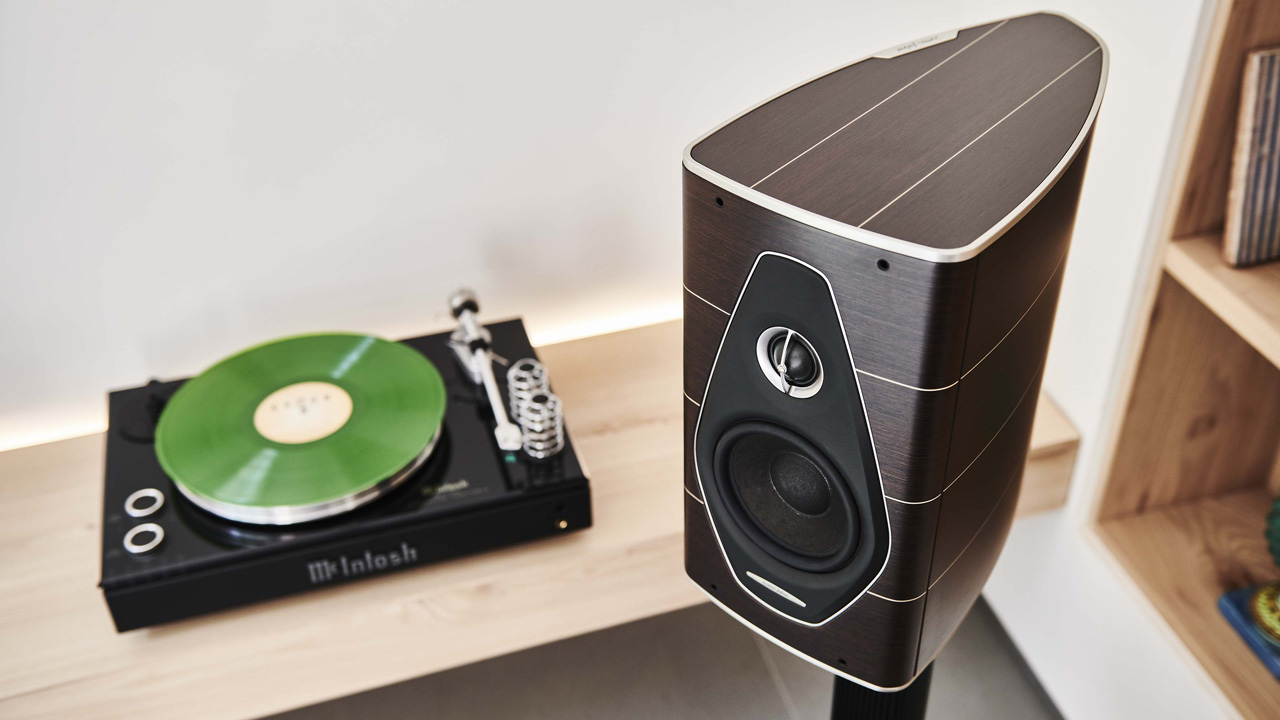
La bella figura
‘La bella figura’, or, ‘the beautiful figure’, is a doctrine Italians are said to live by. It’s the art of making everything in life as beautiful as possible.
Peering out of our hotel window onto the streets of Vicenza, you can see la bella figura everywhere, from the impeccably dressed nonne browsing the traditional market, to the friends chatting and pouring wine as they enjoy a four-hour-long dinner on a crisp fall evening.
This ideology is at the heart of Sonus Faber speakers. From its cheapest bookshelf speakers to the grand floorstanding Olympica Nova V, every model is made with the utmost attention to detail - and all together they strike an imposing figure at the entrance of the company’s headquarters. In fact, even the building in which the company is based is shaped to resemble a violin.
Sign up for breaking news, reviews, opinion, top tech deals, and more.
It’s inside these headquarters that you can see the evolution of Sonus Faber speakers, in a kind of mini museum display that comprises the company’s very first model from the 1980s right up to the newest Lumina model that’s connected to a modern music streamer and gently plays in the background.
Although audio technology has developed at quite a pace over the past few years, the principles behind these speakers’ aesthetic has largely remained the same; striking silhouettes carved in solid wood, smooth lines, and stands made from marble from the hills of Massa-Carrara.
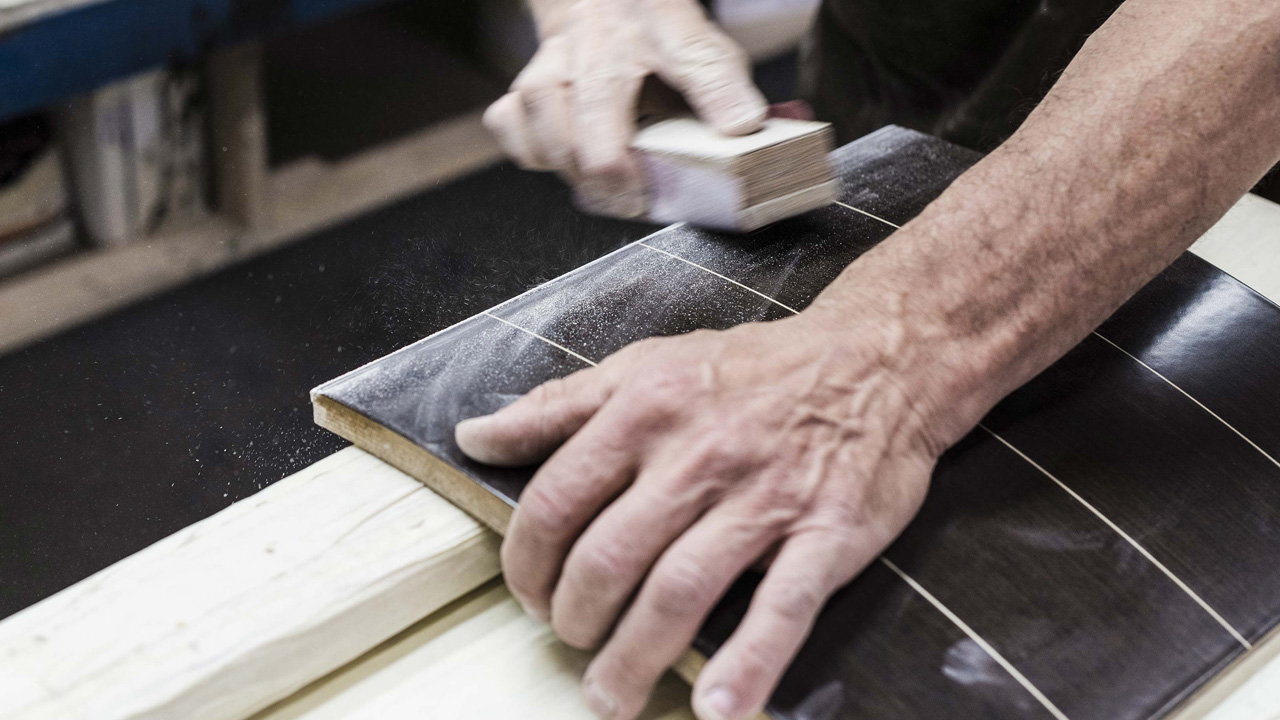
Attention to detail
The arresting look of Sonus Faber speakers is the result of supreme attention to detail at all stages of their production. The company invited us to take a tour of its wood factory, where the solid walnut is selected for quality, hand-sanded, and lacquered by a small team of skilled craftspeople.
Covid-19 precautions has necessitated a degree of social distancing, but the factory floor – which started life as a factory for grandfather clocks – was still a hive of activity, with workers carefully assembling the processing chips that give the speakers their ‘brain’ against a backdrop of speaker enclosures sitting in vices as their glued edges dried.
The bustle of the factory floor may have been very different to the cobbled streets of Vicenza, but there were echoes of Italian life everywhere, from a poster of the Madonna overseeing the floor, to the workers stretching and securing leather over empty speaker cabinets like grandmothers rolling out pasta dough.
Marketing manager Marta Vecellio told us the company has had to ask retired workers to return to the factory, since it’s so difficult to find young people willing to train in the artisan techniques required to make these speakers.
It’s meticulous work, and judging by the fact that each speaker cabinet has to be sanded down no less than eight times, it can be tedious too. The relationship between the artisans and the company is crucial to Sonus Faber’s success. “They’re experts, too” Marta tells us, as we watch them work.

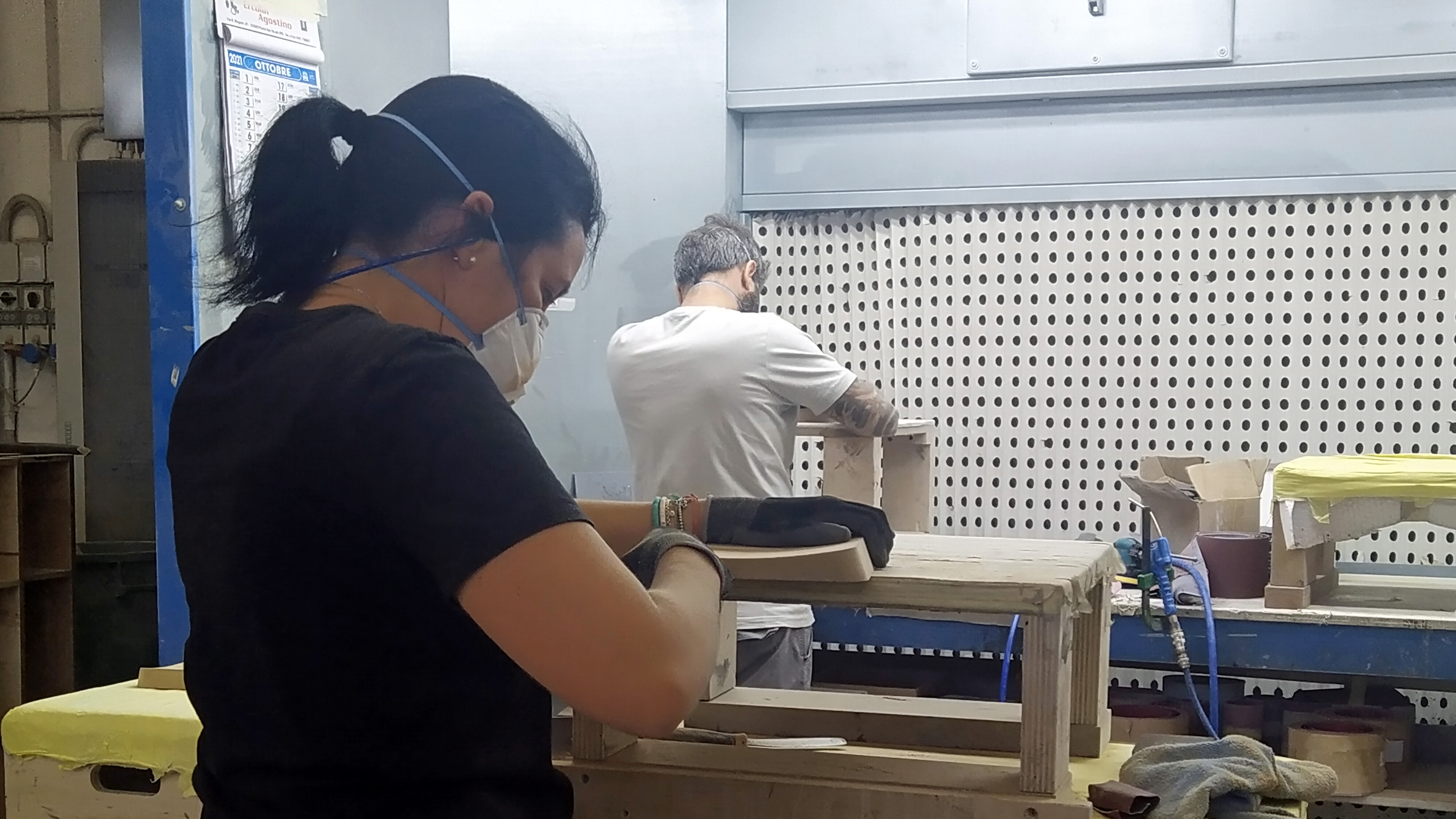
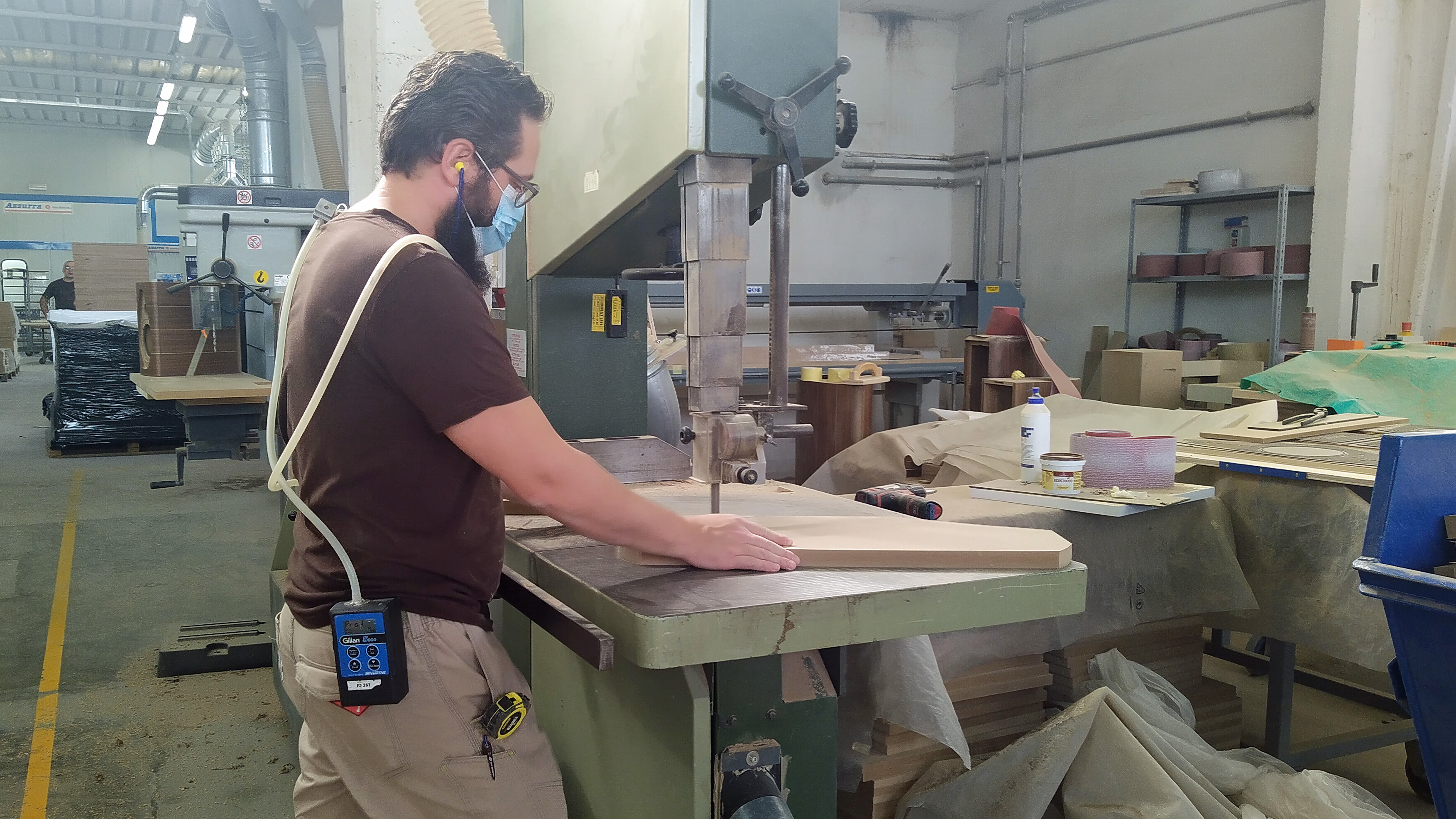

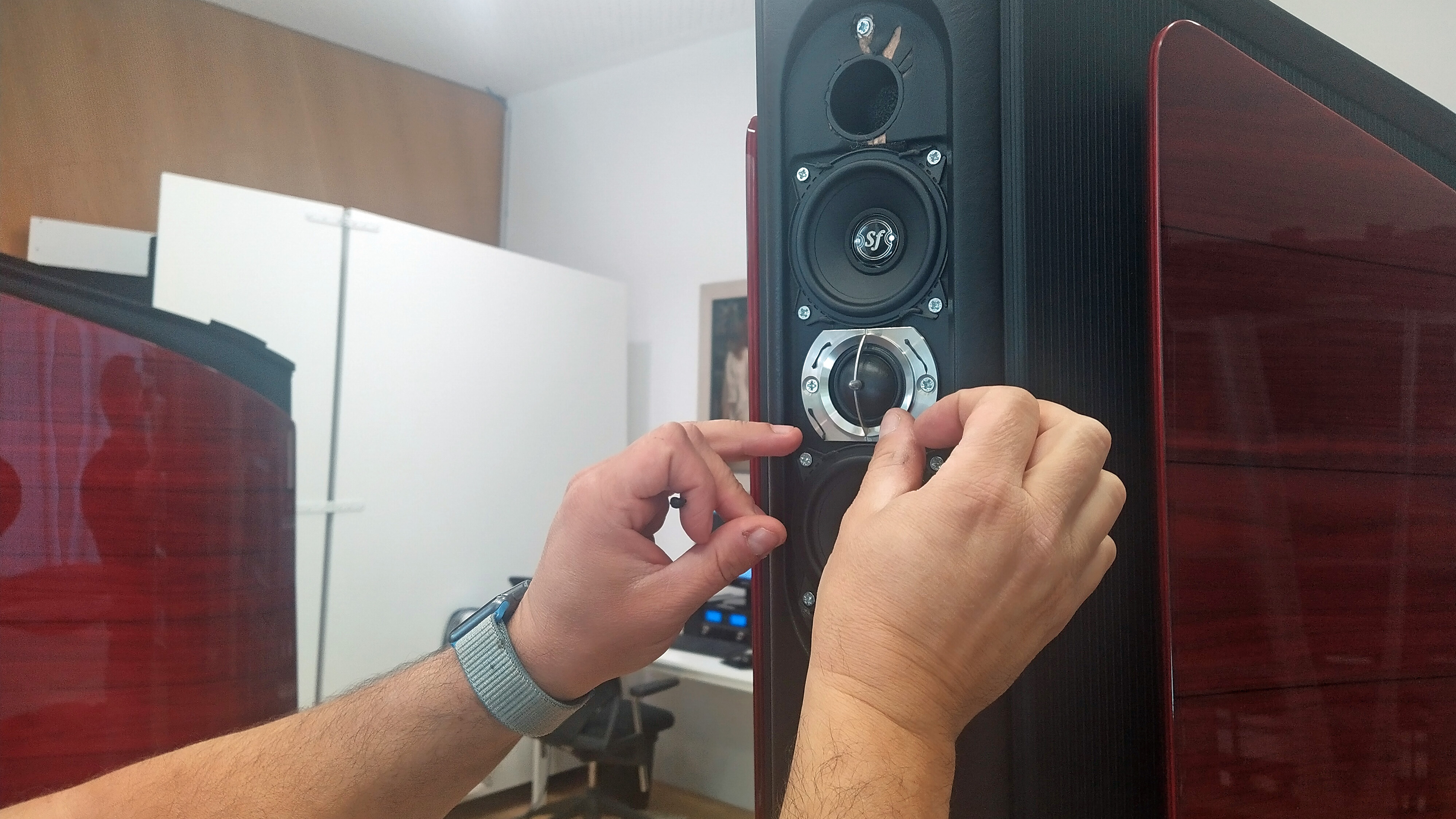
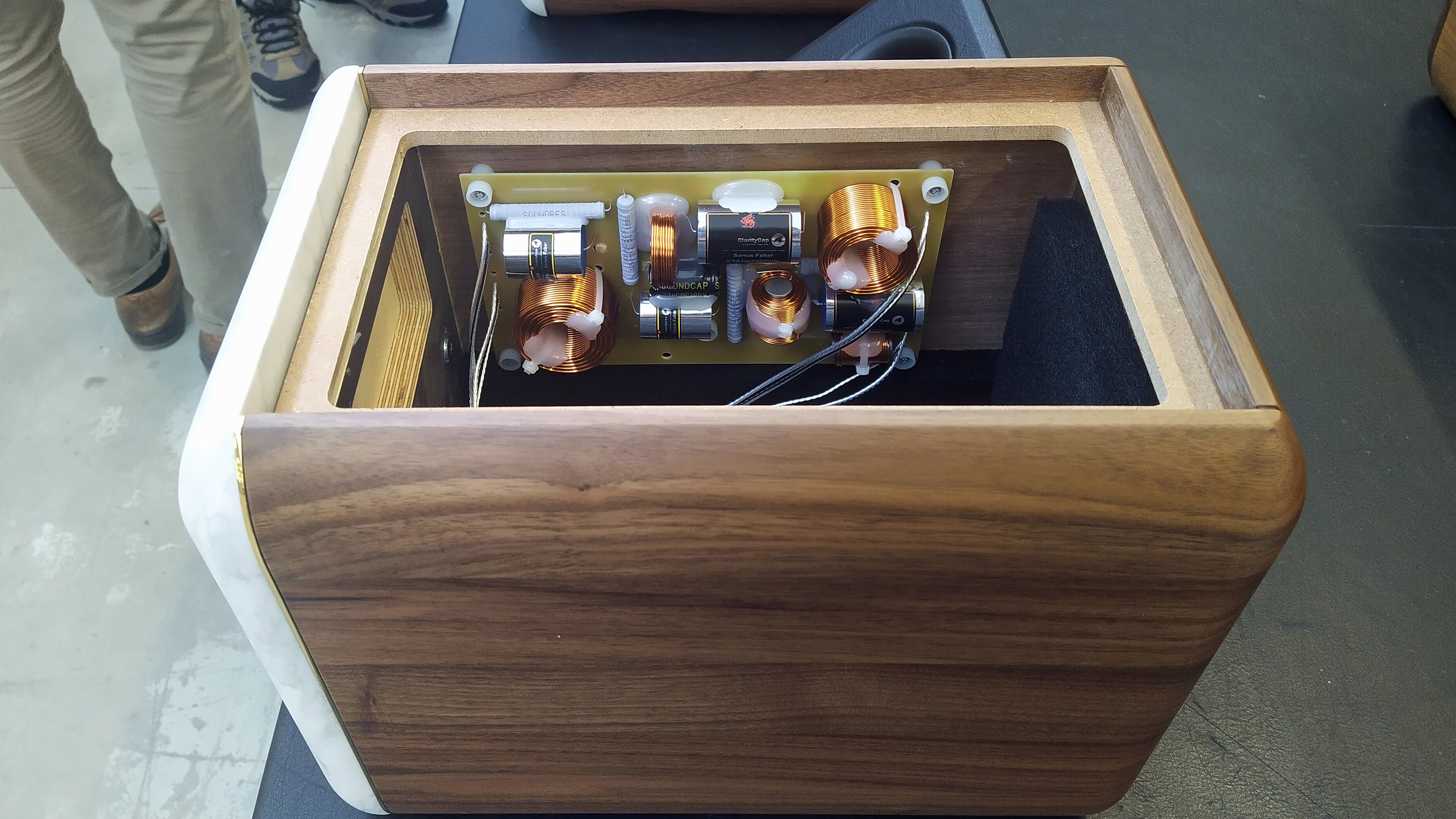
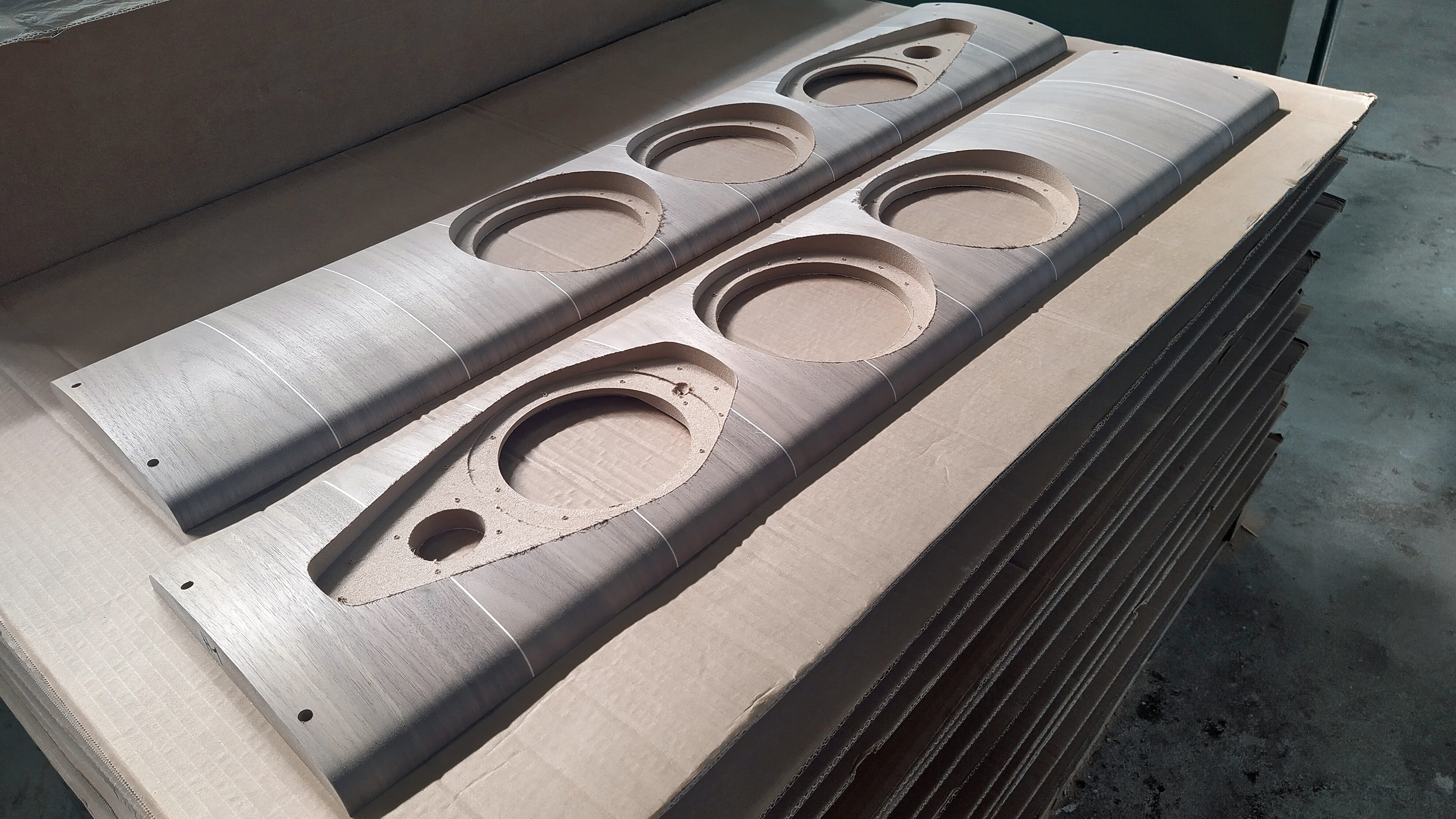
We also saw how the design team, guided by a desire to replicate natural materials and structures in their speakers, begin the entire process. They start with mood boards and hand-drawn sketches, leaving all the computer modelling and calculations for later when the first prototypes are made.
Vice President of Research, Design and Product Development Livio Cucuzza, heads the McIntosh Group design lab, where Sonus Faber speakers are conceptualized. He explained how prototype speakers are refined: “We can adapt the character of the speaker to what we want once we’ve heard the computer simulations, using our ‘instruments’”, he said, pointing to his ears.
“The refinement procedure is very long, but it’s the best part of the job. It’s when the speaker learns to talk”.
While every employee is encouraged to listen to prototype speakers and share their thoughts, Sonus Faber also measures their output using a semi-anechoic chamber and sensitive microphones. The company even assesses the powerhandling of its speakers, essentially measuring how much power it takes for them to blow up. In the interest of health and safety, this particular test is recorded via webcam.
Not surprisingly, all this attention to detail comes at a price. Sonus Faber speakers are made to order, and even the smaller Lumina I bookshelf model will set you back $899 / £799 / AU$1595 (incidentally, you'll find this model in our round up of the best stereo speakers). For a pair of the flagship Olympica Nova V, you’re looking at $16,500 / £14,900 (about $22,400). Ouch.
Still, there’s no doubt that these speakers are beautifully made. Plus, the use of natural materials means that each unit is truly unique, with the grain of the wood and the swirls in the marble stands varying between models.
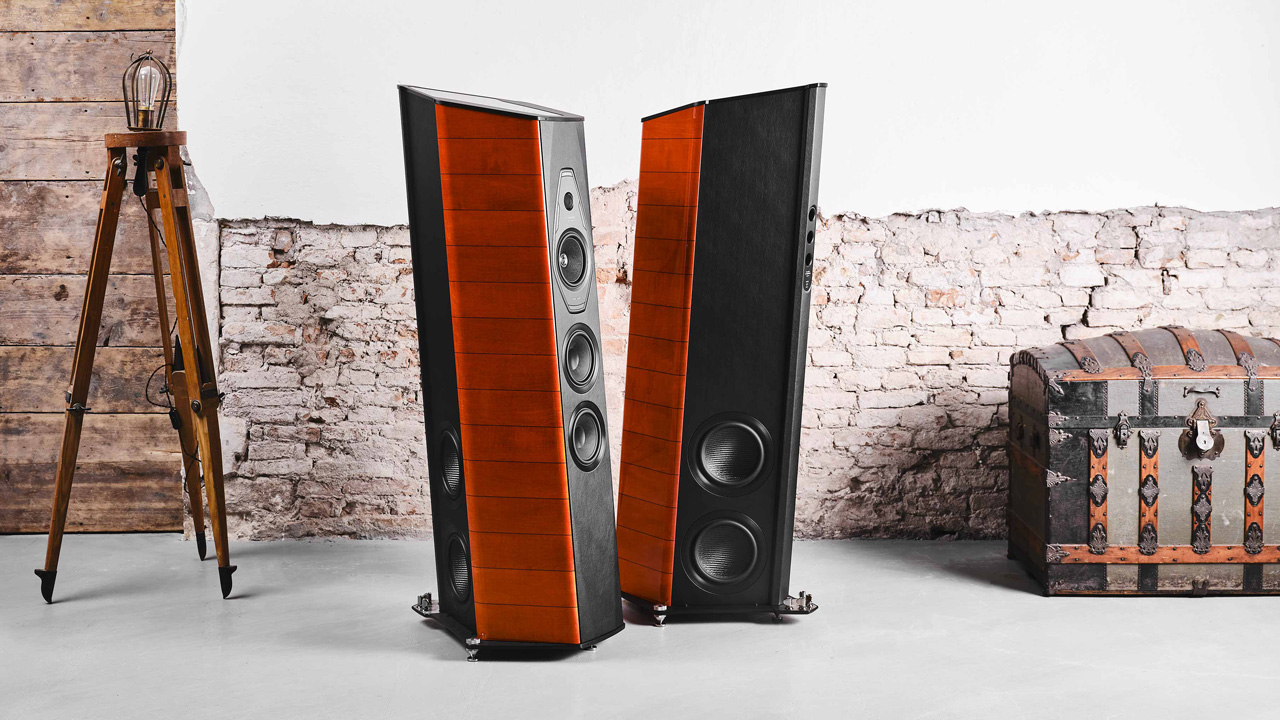
Inspired by music
As well as being made in Italy, many of the company’s speakers take inspiration from Italian crafts, such as the famed luthiers and violin makers of Cremona, Andrea Amati and Antonio Stradivari (the latter is perhaps best known by the Latinized form of his name, Stradivarius).
Many Sonus Faber speakers are inspired by the lute: a plucked, string instrument with a round back that took medieval and renaissance Europe by storm, eventually becoming the most popular solo instrument in the 16th century. In many ways, the lute was the electric guitar of its day.
Sonus Faber’s decision to base its speakers’ design on this shape isn’t simply an aesthetic choice. According to the company, it increases the structural rigidity of the mid-high inner enclosure, which makes the mid-range frequencies sound more natural.
So, why would you want a natural-sounding mid-range? Well, it’s the level more frequently occupied by human voices. In other words, the lute-shaped enclosure is designed to make voices really sing.
While Sonus Faber’s various speakers take different forms, the lute shape is evident in nearly all models. From the rhomboid build of the Cremonese to the asymmetrical design of the Olympica Nova, the speakers all use the basic proportions of the lute as a starting point.
Perhaps the most obviously inspired by the violins of Cremona ate the aptly named Cremonese Ex3me, which is lacquered in a vibrant ‘violin-red’. And instead of a traditional woven material protecting the speakers, Sonus Faber’s solution is to use a series of elastic strings, which evoke the strings of a violin.
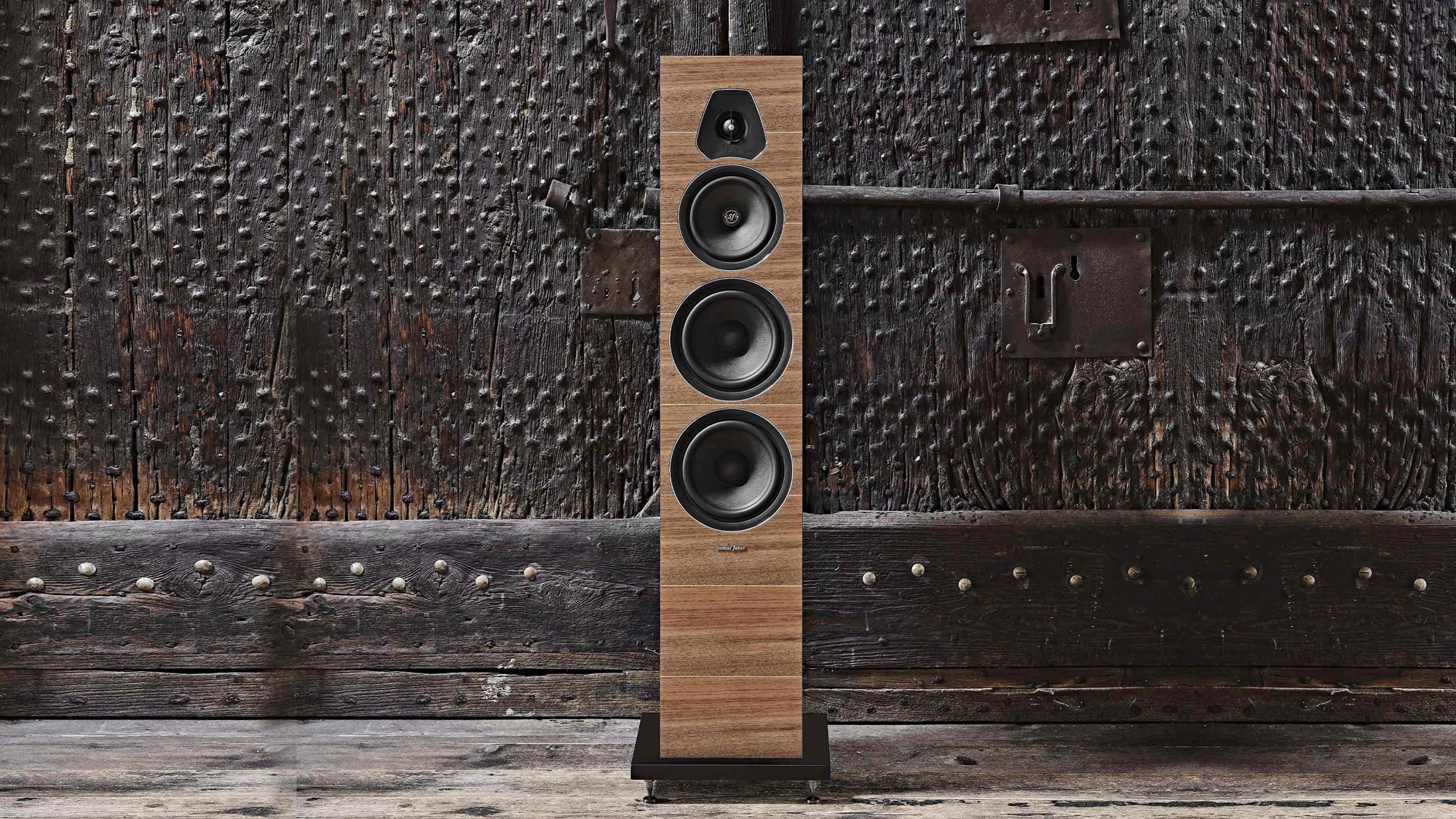
So how does that musical inspiration translate into sound? We heard a couple of Sonus Faber speakers in action, and we were mightily impressed
First up were the $2,800 / £2,499 (about AU$3,800) Lumina V stereo speakers with Saint-Saëns’ Danse Macabre, featuring delicate flutes, wooden glockenspiels, and sparkling chimes playing among rumbling timpani and authoritative horns. That timpani almost made the ground shake, thanks to two very powerful 165mm bass units.
The rhythmic handling and accuracy was super-accomplished, but it was the emotive quality of the sweeping violin melodies that really excited. These speakers do impart a little of their character onto the music, but that’s no bad thing when it complements the instruments so well.
We also listened to the $15,000 / £14,500 (about AU$20,300) Maxima Amator, which are part of the company’s Heritage collection. These speakers boasted a less affected tonal balance, with slightly boosted low and high frequencies, and relaxed mids. They’re considerably more expensive than the Lumina V, and the difference in quality is clear to hear in their sound.
While not as bass-heavy as their cheaper brethren, the Amator offered a more detailed and nuanced listen. Eva Cassidy’s version of What A Wonderful World showcased their propensity for natural-sounding mid frequencies beautifully; her vocal sounded rich and warm, with enough detail to deliver every raspy nuance of her voice.
The clarity was so good that we could hear as her voice moved between the different resonant areas of the facial bones, from the soaring tones of a raised soft palate to the more nasal jazz runs.
Better suited to smaller rooms and for more analytical listening, the Maxima Amator are among the best speakers we’ve listened to – but the darker, more emotive Lumina V were excellent in their own right, too.
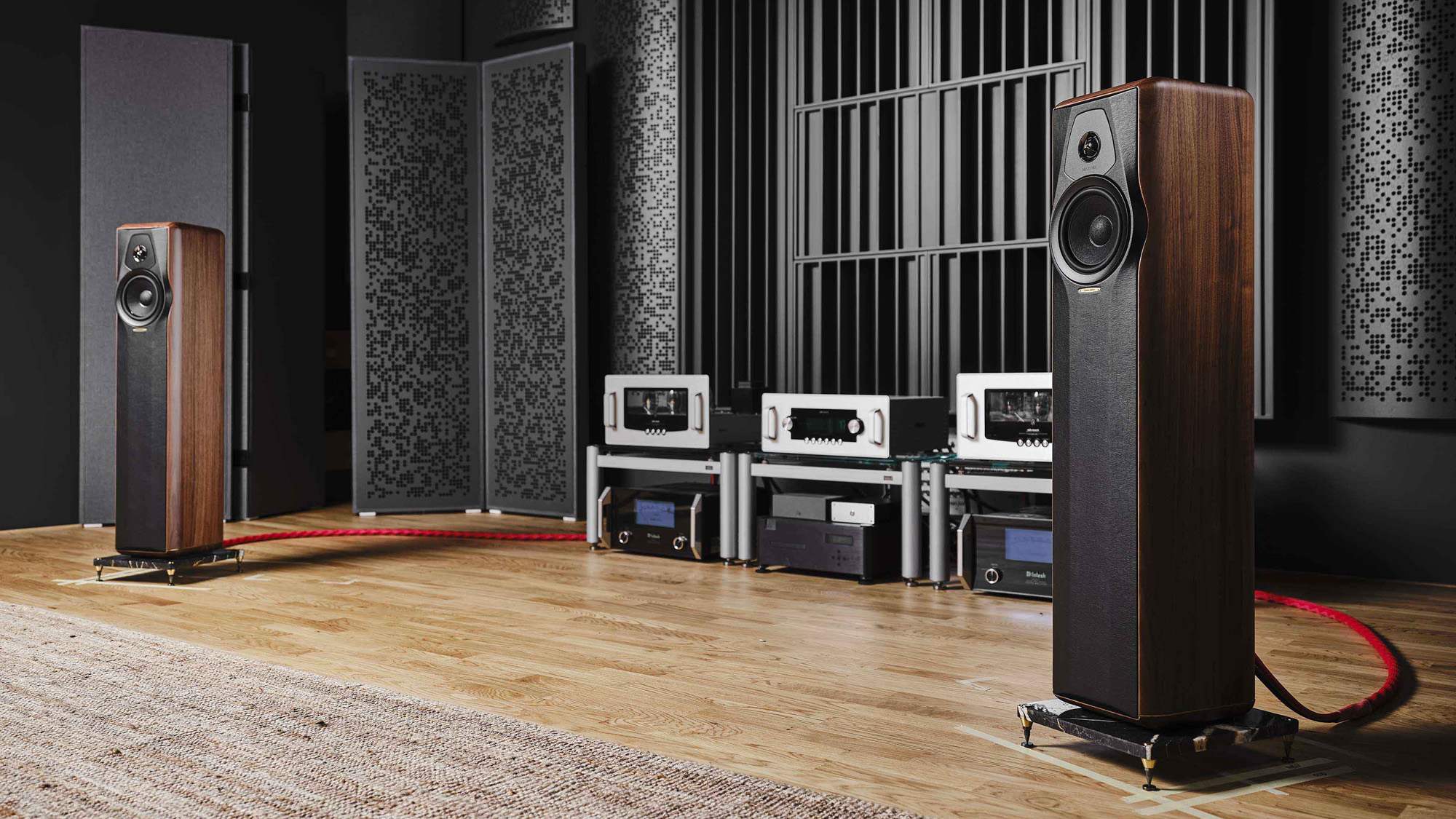
A sustainable future
We live in a world where speed is valued, sometimes above all else. We want our fashion fast, our coffees to go, and a new smartphone every year, tossing older models aside in a darkened drawer, never to be seen again.
Our obsession with constant upgrades and quick turnovers is a disaster for sustainability – and the speed at which technology develops these days means electronic waste is now the fastest-growing waste stream in the world.
Sonus Faber is the antithesis of this throwaway culture (it takes a month alone for the lacquer on the outside of its speakers to be cured). But can it really last?
Thanks to advances in wireless streaming and active speakers that don’t require external amplifiers, hi-fi kit is becoming more accessible than ever. Many modern speakers are wire-free with integrated amps, and even come with built-in support for voice assistants, so you can use them to control your smart home devices and play your music hands-free.
Not only that, but these speakers can be updated to support new streaming services and codecs over time, which means they evolve as they age. You certainly don’t have to wait months for a Sonos One or an Apple HomePod mini to be built by hand.
By comparison, Sonus Faber speakers are positively primeval.
Of course, you don’t buy a Sonus Faber speaker for its connectivity or its convenience. You buy it because you value traditional artisan craftsmanship – and that doesn't follow a yearly release cycle, nor does it pander to technological trends.
The proof is in the sound: sometimes the old ways are the best ways.

Olivia was previously TechRadar's Senior Editor - Home Entertainment, covering everything from headphones to TVs. Based in London, she's a popular music graduate who worked in the music industry before finding her calling in journalism. She's previously been interviewed on BBC Radio 5 Live on the subject of multi-room audio, chaired panel discussions on diversity in music festival lineups, and her bylines include T3, Stereoboard, What to Watch, Top Ten Reviews, Creative Bloq, and Croco Magazine. Olivia now has a career in PR.